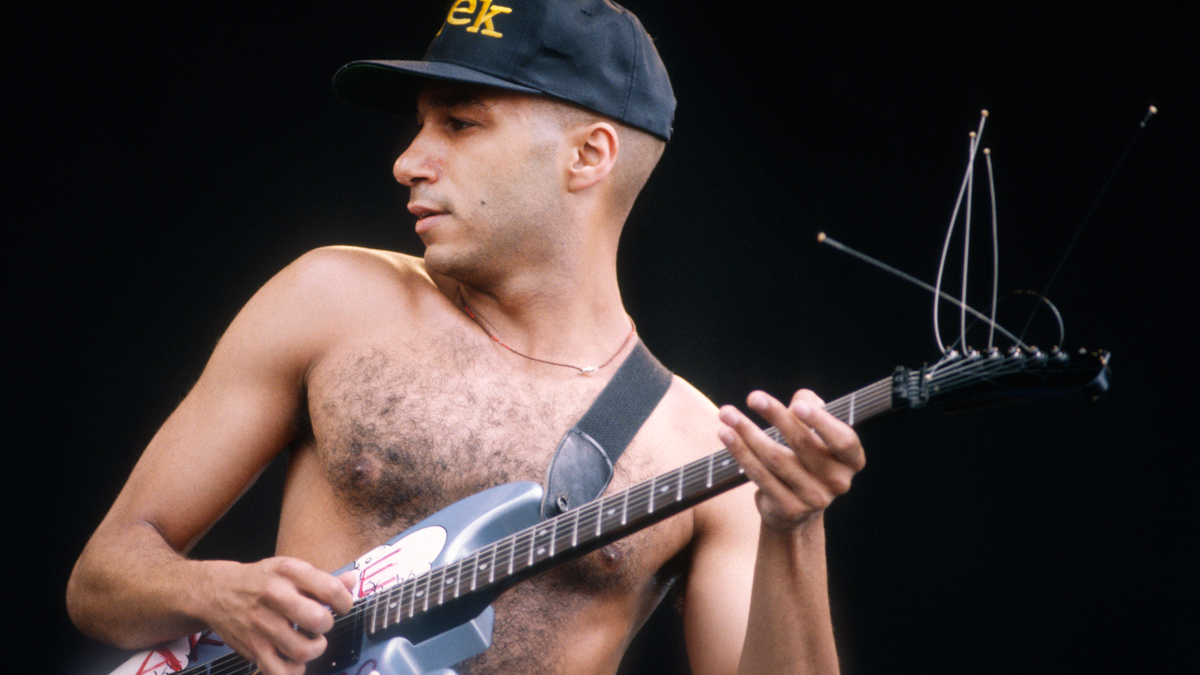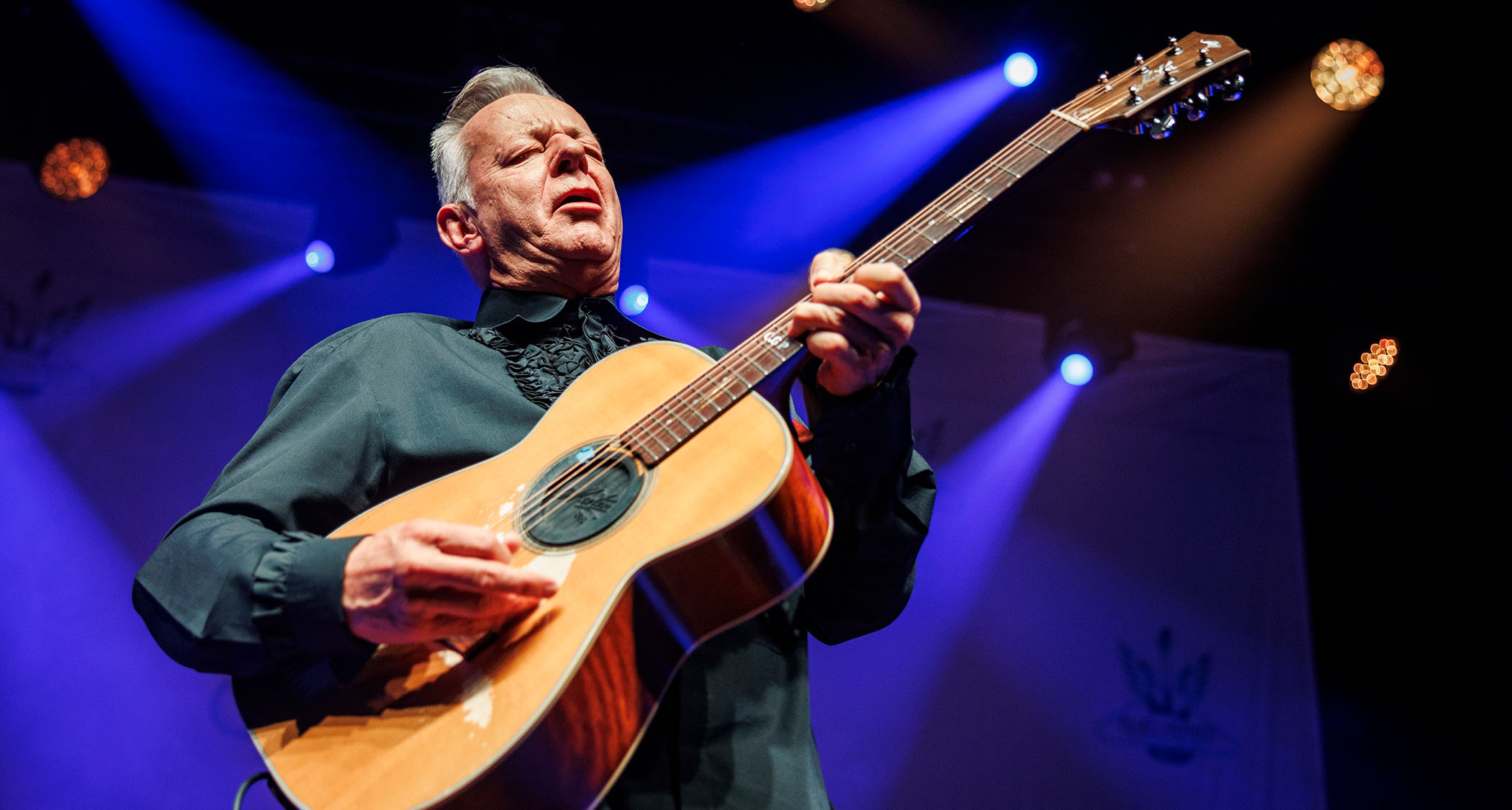Tom Morello’s greatest guitar solo wasn’t on any studio album – and it crammed all his tricks into one epic lead
Back in 1993, the Rage Against the Machine guitarist threw everything he had at this revolutionary solo

Aside from his politics, Tom Morello is known for two things: one is, naturally, those regime-toppling riffs, and the other is his adventurous sonics, which boldly took the guitar into the realm of the DJ.
When Rage Against the Machine’s self-titled debut dropped in 1992, it was a wakeup call to guitarists taken in by the raw, unprocessed guitar tones that dominated the alt-rock revolution of the early-’90s. It was bold and defiant: it flew in the face of convention and helped to stitch together the hip-hop and metal influences the band wore so lovingly on their sleeves.
And while Morello would go on to share a wealth of sonic tricks over the decades that followed – with Rage, and later, Audioslave, Prophets of Rage and solo projects – he previewed many of those trademark sounds right at the outset of RATM’s career.
During the 1993 tour in support of the band’s debut, Morello and his iconic Arm the Homeless ‘mongrel’ electric would routinely take an extended solo spot during Bullet in the Head – and the guitarist, clearly eager to share his discoveries with the world, seized the opportunity to stun audiences with guitar tones quite unlike anything they had heard before.
The best example of this solo is heard during a show at Melkweg, Amsterdam in February 1993, which features on the band’s Japan-only Live & Rare compilation (now available on streaming platforms), and later resurfaced on the 20-year anniversary reissue of their debut.
Sadly, there’s no video of this particular set, but there is footage of another Netherlands gig that features this expanded spot at Pinkpop festival that same year (although it’s not the finest example of Morello’s closing ‘conventional’ guitar solo).
The lead can be broken down into five constituent parts, four of which showcase the unconventional techniques Morello would employ in later RATM and Audioslave cuts.
All the latest guitar news, interviews, lessons, reviews, deals and more, direct to your inbox!
Several of these utilize the Morellian foundation of toggle switching (achieved by setting the volume on one pickup to zero and the other to full and rapidly switching between them), but – get this – not one features his pedalboard staple, the DigiTech Whammy.
The marathon solo begins with a dash to the 4x12 to generate the feedback required for Morello’s toggle-switching, Floyd Rose-shaking siren wail, which wound up on record in 1999’s Sleep Now in the Fire.
Another toggle-happy line is up next, this time featuring a healthy dose of wah pedal, which approximates the descending solo on the studio version of Bullet in the Head – a similar effect can be heard during Guerrilla Radio.
Audioslave fans might recognize what follows: the love-it-or-hate-it ‘laughing monkey’ solo from 2006 groover Original Fire, achieved by depressing the tremolo system all the way and slapping the strings against the pickups.
A ringing low E ushers in the arrival of a move Morello would go on to employ at pretty much every show of his career: it’s the Bulls on Parade toggle-scratch, a studio version of which would appear three years later.
Finally, there’s a brief blast of ’80s metal-style alternate picking to bring the one-minute solo home, and call time on Morello’s DJ guitar excursions.
In modern parlance, the lead is a baller move and a serious flex: Morello was here to lay down the groundwork for the future of guitar playing – and, as it turned out, his own recorded output, too.
And while some may disagree with calling this his ‘best’ solo – shredders will point to Take the Power Back and Know Your Enemy, while Killing in the Name remains the Whammy pedal moment – it is perhaps the ultimate example of the ingenuity he brought to the electric guitar.
Morello discussed his approach to breaking the shackles of traditional guitar playing with Total Guitar last year.
Practicing non-guitar noises led my playing in an entirely different direction. It felt like that lane was open. There was no-one else in it
“Once I had the blinders off and realised the parameters of rock and roll guitar playing were not just Chuck Berry to Eddie Van Halen, I started practicing sounds – whether that was DJ scratching or wild boars rutting at the zoo or the helicopters overhead,” he recalled.
“Even if I couldn’t exactly mimic those sounds, practicing non-guitar noises led my playing in an entirely different direction. It felt like that lane was open. There was no-one else in it. I started constructing a whole sonic world out of these barnyard animal noises, old war films and Public Enemy records.”
Oh, and in case you’re interested in the leads that inspired Morello, he once named his favorite guitar solos of all time (none of which resembles a laughing monkey, for the record).

Mike has been Editor-in-Chief of GuitarWorld.com since 2019, and an offset fiend and recovering pedal addict for far longer. He has a master's degree in journalism from Cardiff University, and 15 years' experience writing and editing for guitar publications including MusicRadar, Total Guitar and Guitarist, as well as 20 years of recording and live experience in original and function bands. During his career, he has interviewed the likes of John Frusciante, Chris Cornell, Tom Morello, Matt Bellamy, Kirk Hammett, Jerry Cantrell, Joe Satriani, Tom DeLonge, Radiohead's Ed O'Brien, Polyphia, Tosin Abasi, Yvette Young and many more. His writing also appears in the The Cambridge Companion to the Electric Guitar. In his free time, you'll find him making progressive instrumental rock as Maebe.



